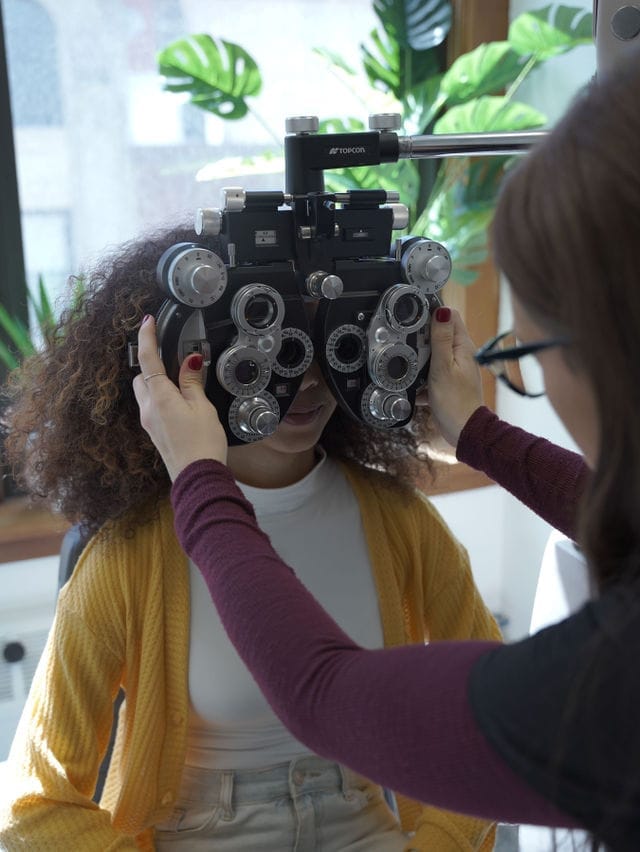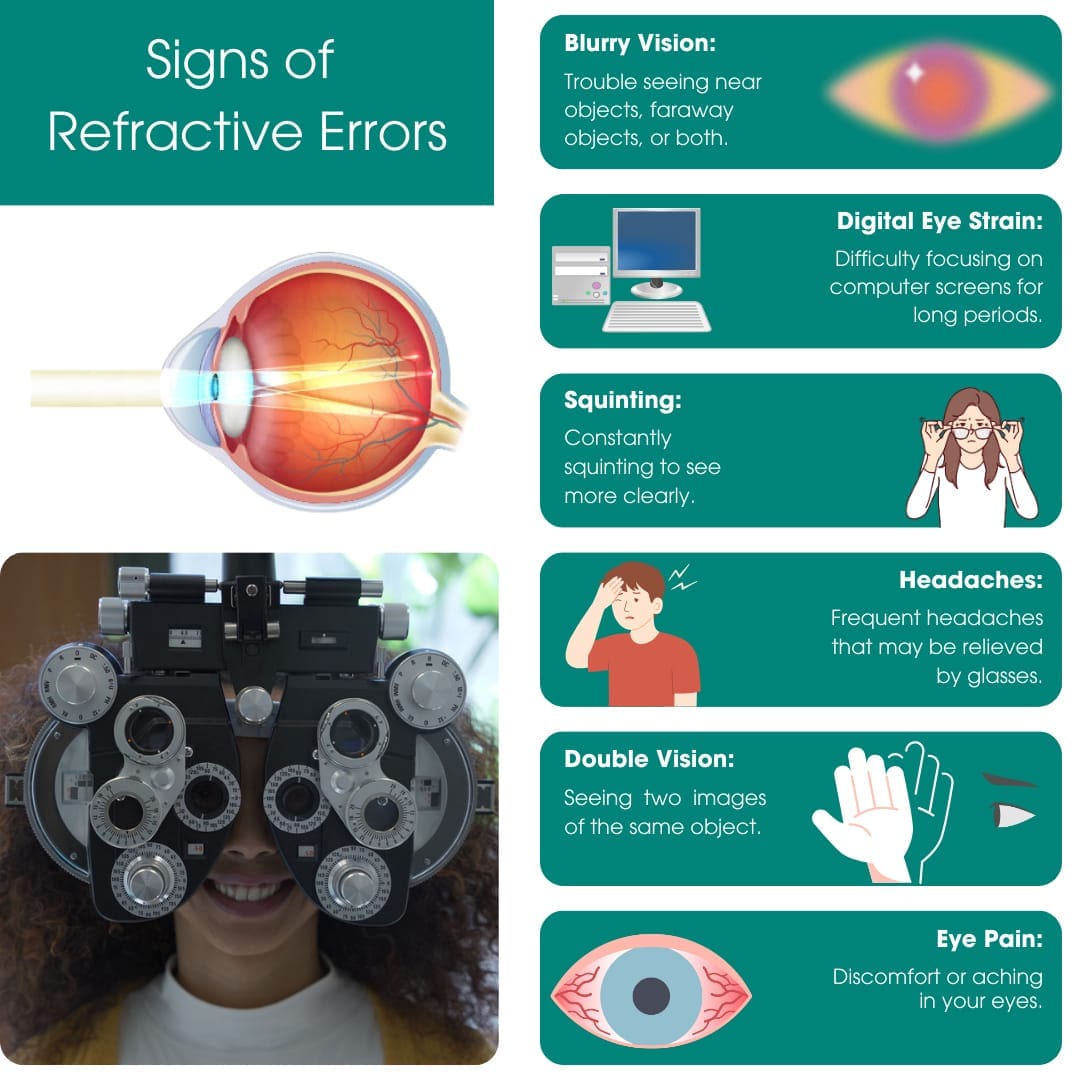 When most people think about going to the eye doctor, they think about a vision test, also called a refraction eye exam. When you have a visual refraction eye test, your NYC optometrist determines if you have a refraction error and if your vision needs correction with glasses or contact lenses.
When most people think about going to the eye doctor, they think about a vision test, also called a refraction eye exam. When you have a visual refraction eye test, your NYC optometrist determines if you have a refraction error and if your vision needs correction with glasses or contact lenses.
Regular eye exams with your eye doctor will ensure you have the best vision possible. A comprehensive eye exam includes a refraction exam for eyes, as well as an eye pressure test and a dilated eye exam or Optomap retinal exam, which can alert your eye doctor to the presence of other eye diseases or conditions. For the best eye care in the Manhattan area, turn to the eye care specialists at Eye Physicians.
When you see as clearly as possible, you have 20/20 vision. The most common reason for imperfect vision is known as a refractive error, and refractive errors can make it hard to see clearly. Many people that have a refractive error don’t realize they could be seeing better.
Things an eye refraction test can check include:
For most healthy adults under the age of 60, an eye refraction test should be done every two years. You may need to have this test more frequently if you have a family history of eye problems or if you’re over 60. Those with diabetes should have a diabetic eye exam annually. You may also need to see your eye doctor outside your routine appointment if your vision changes.
Regular eye exams are also important for children, and once a child reaches school age, they should see a pediatric eye doctor every one to two years. If a child has eye problems, it may affect the way they grow and develop and how well they do in school.
If you have a refractive error, the shape of your eye prevents light from focusing on the retina at the back of the eye. The shape of the eye may be steeper or flatter than normal or the lens may be thicker or thinner than normal.
You may experience symptoms such as:
Refractive errors can start in childhood or can develop anytime in adulthood. Children may not know how to express that they’re having trouble with their vision, but you may notice your child squinting or covering one eye to see. If their grades are dropping or they’re having difficulty concentrating, it could be eye related. A pediatric eye exam typically includes a visual refraction eye test.

An eye refraction exam is a painless test that allows your eye doctor to determine how well you’re seeing.
Things to expect during an eye refraction exam include:
One eye is tested at a time. The information gathered during the eye refraction exam allows your eye doctor to provide the prescription you need for eyeglasses or contact lenses. It may also prompt additional testing for conditions such as retinal detachment or macular degeneration.
A refraction eye test gives your eye doctor the information needed to diagnose a refraction error. This test lets your doctor know if you need corrective lenses and what strength the lenses need to be.
This test lets your eye doctor know whether you have conditions such as:
Having a refractive error increases your risk of developing other vision problems, such as lazy eye or glaucoma. Eyeglasses are the easiest way to correct refractive errors and also the safest. Contact lenses are an alternative to eyeglasses. Once your eye doctor has prescribed eyeglasses or contact lenses, you need to see your eye specialist every one to two years to make sure your prescription hasn’t changed.
Vision problems don’t always cause obvious symptoms. Regular eye exams are the best way to protect your vision and make sure there are no eye disorders that you aren’t aware of. Contact Eye Physicians right away to make an appointment for a routine eye exam or if you have any vision changes or other eye symptoms that concern you.
Eye Physicians
110 Lafayette St, Suite 503
New York, NY 10013
(212) 292-4814
Entrust the care of your precious eyesight to highly skilled and experienced eye care professionals. For top-notch ophthalmologists and optometrists in Downtown Manhattan, choose Eye Physicians. Eye Physicians ensures prompt care, precise diagnosis, and personalized treatment plans.
Schedule an Appointment